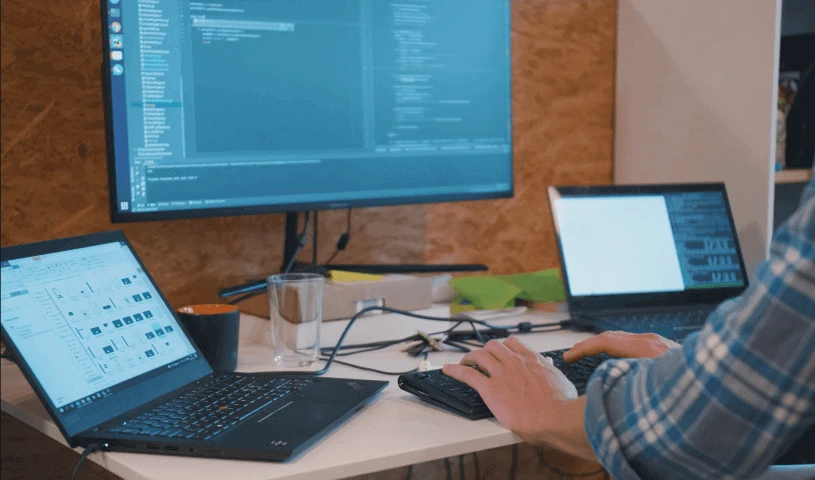Integrated systems or embedded development
What do Embedded Engineers do?
There is software in many products nowadays, from car engine control systems to espresso machines. As an Embedded Engineer or Embedded Developer, you develop systems that integrate with technology. The tasks of an Embedded Engineer may include, for example:
- Developing a requirement specification
- Figuring out whether it is possible or impossible to build the product
- Determining how it will communicate with other systems or people
- Writing code
- Testing code
- Performing bug fixes
Although coding is a large part of what you do on a daily basis, there are many other tasks that you also do.
We can therefore summarize that as an Embedded Engineer, you get a varied job that makes a difference for people.

What software do Embedded Engineers use?
It varies greatly depending on the project you are working on. Right now, Linux is used both on the desktop and in the devices being developed. Other tools are VS Code, Git, Gerrit, and GCC. The programming language is mainly C, but some Python code is also available. You can use Jira to try to keep some order in what you are doing.
It is interesting that many of the programming languages are very old in the context but still highly relevant. The first version of Linux was released 32 years ago, GCC was released 35 years ago and the C programming language turned 50 a few years ago.

What is the difference between an Embedded Engineer and a System Developer?
The line is quite blurred on what distinguishes an embedded engineer from a system developer. Most people who have worked for a while may have worked in both roles and even “hybrid roles”.
However, it is often the case that an embedded engineer works quite close to the hardware with bits and pieces and the products do not always have a user interface.
A system developer often works with systems that interact more with people instead of electronics, and then there is almost always a user interface. But as I said, the line is not entirely clear, in some products you can work with both sticks and user interfaces.

Three quick questions
We asked our Embedded Engineer Pontus Thuvesson three quick questions.


The best part of your role?
In a fun project or product, it is often the case that you can have a helicopter view of it, even if you don’t necessarily work on all parts. The projects are no bigger than having a reasonable overview of all the parts. When you come across something that needs to be fixed, it is easy to solve it quickly together “if you fix it that way on your side, I can fix it here on mine” and thus solve the problem in a good way.

Most fun project?
There are many projects that have been fun. But it feels a little extra fun when I get to be involved in the whole process, from generating the first ideas to setting up the first live installation. I have also worked on MedTech projects where the products improve quality of life and save lives.

The best part of OIM?
That ‘family’ feeling is important to me. You can talk about almost anything with almost anyone in the organization. If you need help with something, you get it and you can also be a “guest artist” in projects you are not normally involved in. I like that!
Do you use the knowledge gained during your studies in your daily work?
Absolutely!
I once majored in computer science at Lund University. The independent courses I took alongside it are also very useful, especially behavioral science. Understanding how people work in different contexts is very useful both in the interaction during development and of course also when products need to communicate with people.

What projects did you work on in 2022?
For the last six months, I’ve been working on networked speakers, but not with the sound system, but the systems running further down in the product.
Do you have a dream job as an Embedded Engineer?
It would be something where I can get a good picture of the entire product and be involved in the entire development process, from the start to the product being up and running in reality. Those projects may not be very common, but OIM has the ability to do that, to create the whole.

Some tips for anyone who wants to become an Embedded Engineer
Be curious!
Try new things you haven’t done before, throw yourself into, and try other disciplines like mechanics or electronics. Even though there are of course those who are infinitely better at it than me, I can easily use both a welder and a soldering iron if something needs to be fixed or panicked. Knowing a little about a lot often gives more than the other way around.

Want to work as an Embedded Engineer?
See if we have any vacancies or call us at +46 40-13 13 69. You can also contact us using the form below!
